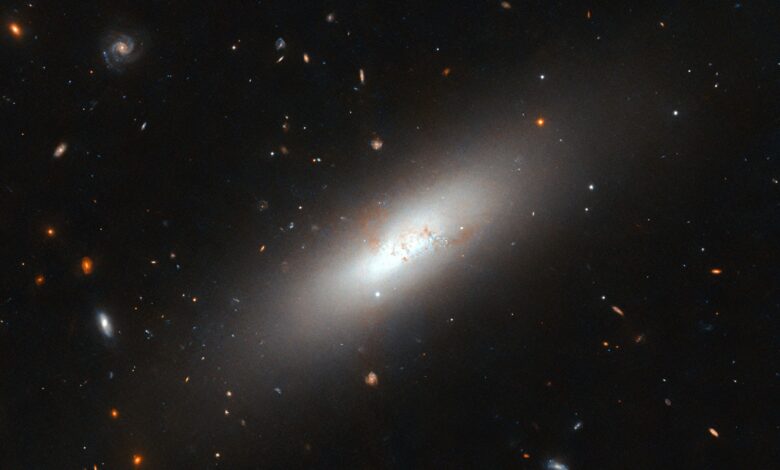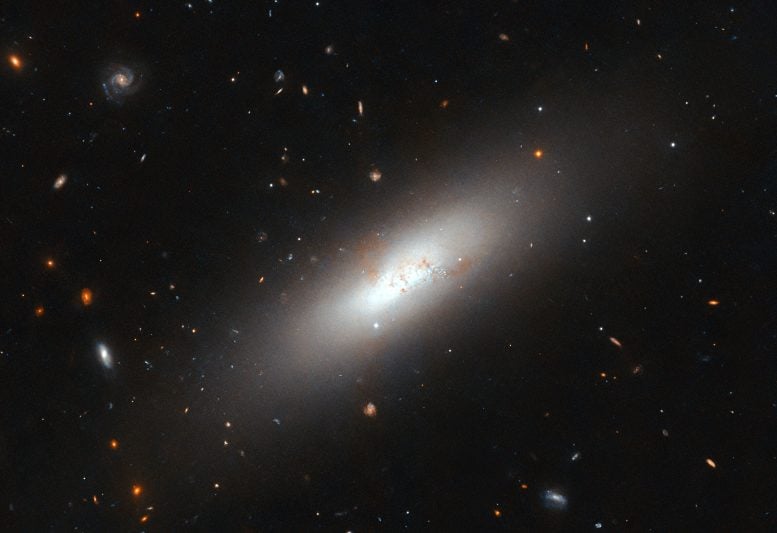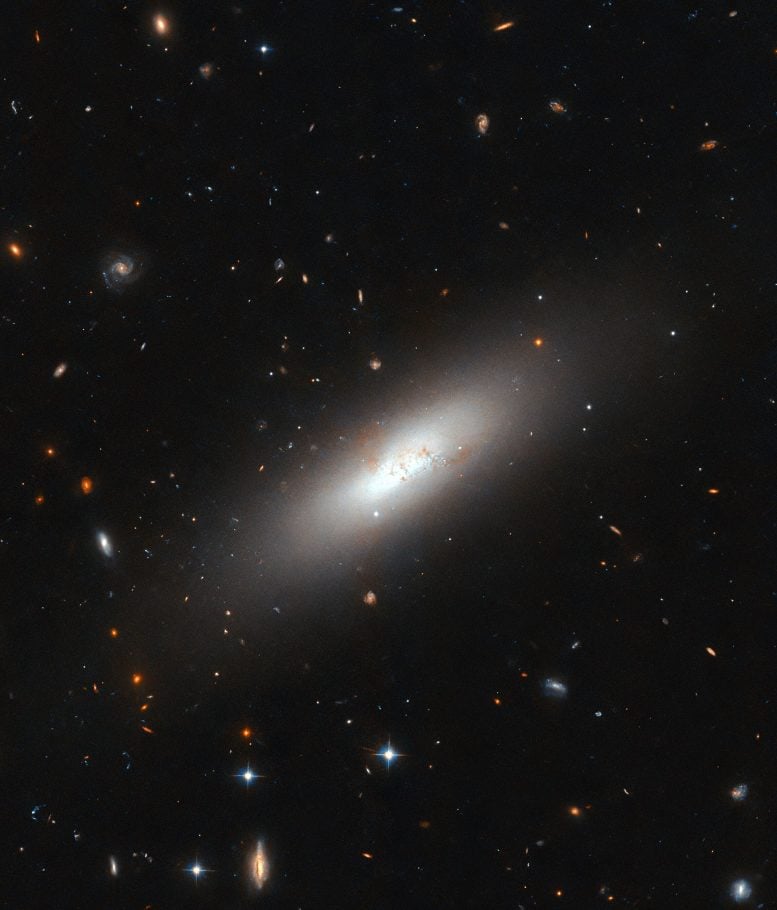Hubble Uncovers a Puzzling Case of Star Birth


This Hubble Telescope image features IC 3430, a dwarf elliptical galaxy in the Virgo constellation. Despite its lack of distinctive structural features, IC 3430 shows signs of recent star formation in its core, an unusual characteristic for its galaxy type, attributed to the effects of ram pressure in the Virgo cluster. Credit: ESA/Hubble & NASA, M. Sun
IC 3430, a dwarf elliptical galaxy in the Virgo cluster, stands out due to its core of hot blue stars, indicative of recent star formation—a rare feature for its kind, likely caused by its movement through the cluster.
This majestic Hubble Space Telescope image reveals the subtle glow of the galaxy named IC 3430, located 45 million light-years from Earth in the constellation Virgo. It is part of the Virgo cluster, a rich collection of galaxies both large and small, many of which are very similar in type to this diminutive galaxy.
IC 3430 is a dwarf galaxy, a fact well reflected by this view from Hubble, but it is more precisely known as a dwarf elliptical or dE galaxy. Like its larger cousins, this galaxy has a smooth, oval shape lacking any recognizable features like arms or bars, and it is bereft of gas to form very many new stars. Interestingly, IC 3430 does feature a core of hot, massive blue stars, an uncommon sight in elliptical galaxies that indicates recent star-forming activity. It’s believed that ram pressure from the galaxy plowing through gas within the Virgo cluster has ignited what gas does remain in IC 3430’s core to form some new stars.
Dwarf galaxies are really just galaxies with not many stars, usually fewer than a billion, but that is often enough for them to reproduce in miniature the same forms as larger galaxies. There are dwarf elliptical galaxies like IC 3430, dwarf irregular galaxies, dwarf spheroidal galaxies, and even dwarf spiral galaxies! The so-called Magellanic spiral is a distinct type of dwarf galaxy, too, the best example being the well-known dwarf galaxies that are the Magellanic Clouds.




